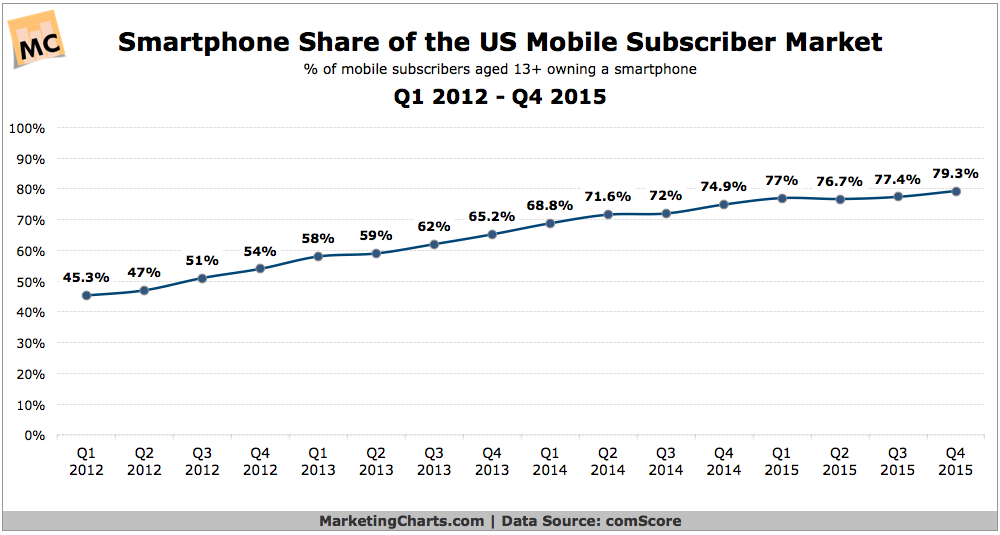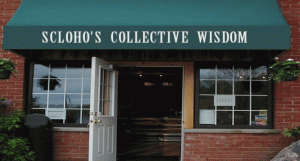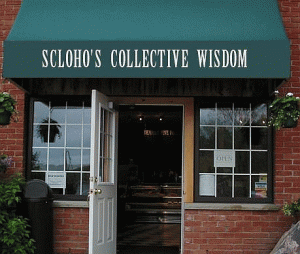by Scott Howard | Feb 16, 2016 | Marketing and Advertising Insights, ScLoHo's Collective Wisdom, ScLoHo's Media, ScLoHo's Web World, WOWO Fort Wayne Radio Advertising with Scott Howard
My radio station WOWO Radio in Fort Wayne, Indiana, just released a new smartphone app as one of our improvements for 2016. You can find it here for Android and for those of you Apple fans, go here.
We just revised our website this year too with a cleaner, less cluttered look than our previous site. The WOWO App and the website are continuously updated with the stories and interviews minutes after they first appear on the air at WOWO radio. You can also listen online from the website or the WOWO App.
Why the changes?
Multiple reasons but a big one is the continued growth of smartphones, both iPhones and Androids. Nearly 80% of us have one now.

This means if your website is not mobile friendly, you are annoying, no, let me say it stronger, you are pissing off 4 out of 5 people because you are behind the times.
Need help with an upgrade? Contact me. Like Yesterday.
by Scott Howard | Feb 3, 2016 | Marketing and Advertising Insights, ScLoHo's Collective Wisdom
As an ongoing student of human relationship principles in marketing, I try to be observant. Sometimes, I see anecdotal evidence, other times things just fall in my lap, or email.
Recently MarketingCharts.com sent me an email that included this chart.

Take a look and learn. You can also click on it and read the story from MarketingCharts.com
On a personal note, when I switched cellphone companies last year, my skeptical wife kept waiting for that “gotcha moment” when our bill was going to be jacked up. But it didn’t happen. Republic Wireless earned our trust. We are now down to less than $40 a month for two smartphones.
This week I am in the midst of cord-cutting and cancelling our cable TV, while keeping our internet and one day I’ll let you know how it all turns out. Unfortunately dealing with one of the most despised companies around is not fun, and certainly not producing warm feelings of trust.
An update, since I wrote the first draft of this over the weekend. We ended up sticking with Comcast due to issues with getting a decent signal for broadcast TV. The poor customer service rep on the phone with my wife who was working from her script had to hear the wrath of my Mrs. We stuck with them, not because we trust them, but we had no other choice for what we wanted. In the end we lowered our monthly bill by 30 bucks, but will have to go thru another phone call like this in 12 months. This is not the way to run a business and if your customers can find an alternative that they trust, they will.
You need to be a trusted business and trusted person. If you are, we need more of you.
by Scott Howard | Jan 26, 2016 | Marketing and Advertising Insights, ScLoHo's Collective Wisdom, ScLoHo's Media
Recently with all the ups and downs in the market, mostly downs, I received a note from my broker not to worry, all will be okay.
That’s great, but I’d rather have someone tell me how to earn money instead of lose it or gamble with it.
Another email I received this month, told me how, IF I OWNED A BUSINESS. And the answer is one I have seen play out repeatedly over the years… Advertising on the radio.
Before I share the details, I invite you to talk with me about learning how we can might be able to create a real return on your investment. I’ll be honest with you and tell you what you need to know, not just sell you stuff. I may decide NOT to sell you anything, that’s a story for another day.
Here’s the article that mentions a 17:1 ROI using radio as an advertising medium (from Marketing Charts):
Radio ROI Compelling Advertisers
by Jack Loechner
According to a recent Nielsen “sales effect study,” examining radio’s return on ad spend in four retail categories, every dollar spent in radio advertising could generate up to $17 of revenue from listeners exposed to ads from department stores, home improvement stores, mass merchandisers and quick-service restaurants. Hispanic consumers led all categories measured in total spend, and drove increased sales ranging from 9% to 49%.
The study found that, while new digital formats are capturing headlines, traditional formats, specifically radio, could give advertisers the returns they want, says the report.
Combined data from Nielsen’s Portable People Meter (PPM) panel with Nielsen Buyer Insights credit and debit card data, radio exposure positively affected bottom-line sales and drove new, valuable shoppers for each category studied…
Carol Edwards, senior vice president, media analytics, Nielsen, concludes that “… reaching 93% of all U.S. adults every week and playing a leading role in consumers’ purchasing decisions, radio has the ability to positively impact campaign results… ”
| Weekly Reach of Devices (% Of U.S. Population) |
| |
Age Group
|
| Device |
All Adults
|
18-34
|
35-49
|
50+
|
| TV |
87%
|
76%
|
90%
|
93%
|
| Radio |
93
|
93
|
95
|
91
|
| PC |
54
|
49
|
63
|
54
|
| Smartphone |
70
|
80
|
81
|
56
|
| Tablet |
33
|
42
|
49
|
22
|
| Source: Nielsen, October 2015 |
For more info, contact me Scott@WOWO.com or 260-255-4357
by Scott Howard | Jan 8, 2016 | Marketing and Advertising Insights, ScLoHo's Collective Wisdom
Yesterday I shared an article I wrote on the Human Relationship Factor in Advertising.  Today I have results from a study shared by Mediapost that goes into deeper detail. I bolded a few items that caught my attention:
Today I have results from a study shared by Mediapost that goes into deeper detail. I bolded a few items that caught my attention:
Engage With Customers One-To-One
According to SAP Hybris, presenting the findings of a study conducted by Forrester incorporating the evolution of personalization from push messaging to one-to-one personal customer experiences, there is a distinct gap between consumers’ expectations of personalized marketing and what marketers are actually delivering.61% of consumers are less likely to make future purchases following less-than-satisfactory personalized experiences. 91% of marketers are prioritizing personalization but only 16% have the ability to deliver real-time, behavior-based marketing across channels, says the report.
In summary, the study findings reveal:
- While 66% of marketers rate their efforts at personalization as “very good” or “excellent,” just 31% of consumers report companies are consistently delivering personalized, cross-channel experiences
- 40% of consumers say most promotions don’t deliver anything of interest
- 44% of consumers say they receive too many offers and promotions
- 37% of consumers say they delete most email offers and promotions without reading them
- 40% of consumers have unsubscribed or opted-out because they feel overwhelmed
- Among those consumers reporting less-than-satisfactory personalized experiences, 61% said they were “somewhat” or “much less likely” to take advantage of future offers
Because consumers are sharing so much personal data with brands, they expect transactional perks and improved customer experience in return, says the report. While most marketers seek to improve personalized customer experiences from this customer data, their strategies are ineffective.
I’ll touch more on this in the future and as always contact me with questions and comments.
by Scott Howard | Dec 29, 2015 | Marketing and Advertising Insights, ScLoHo's Collective Wisdom
Being a grandparent is much different than it was 40 years ago when I was a teen and my grandmother was alive.
It’s also much different than 20 years ago when my parents were grandpa and grandma.
I became a step-grandpa when I married in 2001. My wife’s son, had a son when he was 17 and now most of the rest of our 5 kids have kids too. Eight grandkids at last count and my wife and I don’t fit the stereotypes of our parents and grandparents of what it’s like to be at this life stage.
Mediapost has some wisdom on how to market to the Baby Boomer Grandparents:
The Psychology Of Marketing To Grandparents
by Lori Bitter
Let’s face it. Psychologist Abraham Maslow never wanted to be a marketer. In his work, Toward a Psychology of Being, he describes the 13 personality attributes of the self-actualizing person. Often depicted as the top of the pyramid on the Hierarchy of Needs, “Self-actualization” is the realization of one’s full potential, with a focus outside of self. 
Maslow could not have known the power of his work in shaping our approach to understanding and communicating with older adults. In our research with grandparents, the birth of the first grandchild signals the shift toward “actualization.” They describe it as a time when the future seems sharper. They feel their own mortality and grapple with the idea of the family continuing when they are gone. Relationships take on more meaning, as the sense of selflessness takes over.
These attributes are so important to creating strategies that engage consumers that we are going to discuss them all – a few at a time – and specifically as they relate to the life stage of grandparenting. Along with caregiving and empty-nesting, grandparenting represents a Boomer life stage with the most “consumer moments” and an openness to trying new products and services that they may have not considered in the past.
Here are the first four of Maslow’s attributes and how they relate to grandparents:
1. Superior perception of reality. Mature adults see things that younger consumers cannot see. Advertising claims are viewed with a much more discerning eye, and a lifetime of consumer experiences. Grandparents, in particular, are perceptive and sensitive about communications that ring false. In our research this was translated to seeing images of “real families” in terms of household makeup, ethnicity, and lifestyles. They have seen the world change during their lifetime.
2. Increased acceptance of self, others and nature. Older adults are more mellow, contrary to the stereotype of the hyper-focused Boomer. They appreciate the subtle humor and ironies of daily life.
For grandparents, this is reflected in a sense of greater enjoyment of their grandchildren versus their own children. They are more relaxed and present than they were as parents. Grandfathers, in particular, observe this, saying they were busy working when their children were small, so they have a “do-over” with their grandchildren.
3. Increased spontaneity. There is a sense of the importance of each day, and being present. While as young parents they were more focused on schedules and planning, as grandparents they can be more spontaneous with their grandchildren and have a “seize the moment” approach. This can be disconcerting to their adult children whose memories may center on workaholic parents who lived by their Filofax (a pre-BlackBerry device, now known as a smartphone).
4. Increase in problem-centering. There is a focus on problems beyond themselves; they engage in authentic problems. Grandparents report that they have an increased desire to leave the world a better place for this generation of grandchildren. They volunteer, give to charitable causes and support organizations and principles with this mission. They may extend this focus to healing the family and putting old issues in the past for future generations.
To effectively market product and services to older adults, it is critical to understand the psychology of older adults and to know why the things we observe in research are so. We will visit more of Maslow’s points over time. This understanding can mean the difference between talking at older adults and engaging with them in a conversation.
Bill Bernbach, who is not quoted much anymore, once said, “Human nature hasn’t changed for a billion years. It won’t even change in the next billion years. Only the superficial things have changed. It is fashionable to talk about the changing man. A communicator must be concerned with the unchanging man – what compulsions drive him, what instincts dominate his every action, even though his language too often camouflages what really motivates him.”
David Wolfe, in Ageless Marketing, challenged us as marketers focused on older adults, to “tap the soul of the unchanging man.” To do that requires an understanding of archetypes, root motivations, and the powerful emotions that consumers may not even realize are lurking beneath the surface.
by Scott Howard | Nov 18, 2015 | Marketing and Advertising Insights, ScLoHo's Collective Wisdom
The folks at MarketingCharts.com released a whole bunch of data this month that says that most retailers can expect at least a 3% increase in sales this holiday season compared to last year. 
There are a whole bunch of qualifications to that statement and you can read the report here, but for now, I’ll share some of the items that caught my eye.
- Almost half – 46.1% – of all holiday shopping will be conducted online, says the NRF, Free shipping/shipping promotions will be an important factor for close to half (47%) of holiday shoppers’ decisions on where to shop.
- About two-thirds of consumers expect to use mobile devices while shopping in-store.
- Buying online and picking up in-store appears to be a key trend this holiday season (as identified in the NRF survey), and an Accenture study suggests that two-thirds of consumers who engage in this activity will likely buy additional items during their store visit.
- The quality of the website experience is as important as the physical store experience to shoppers this year, with about half considering each of these when choosing a retailer, according to a study from MarketLive. The survey also finds enthusiasm for personalized product recommendations and mobile alerts.
- Gift cards remain a popular gift across studies, with the Brand Keys study being very buoyant on this front, indicating that virtually all (96% of) holiday shoppers will purchase one this year.
So as a local retailer, what are you going to do to make sure you get your piece of the pie, (or fruitcake) this year? Want help? Contact me.




